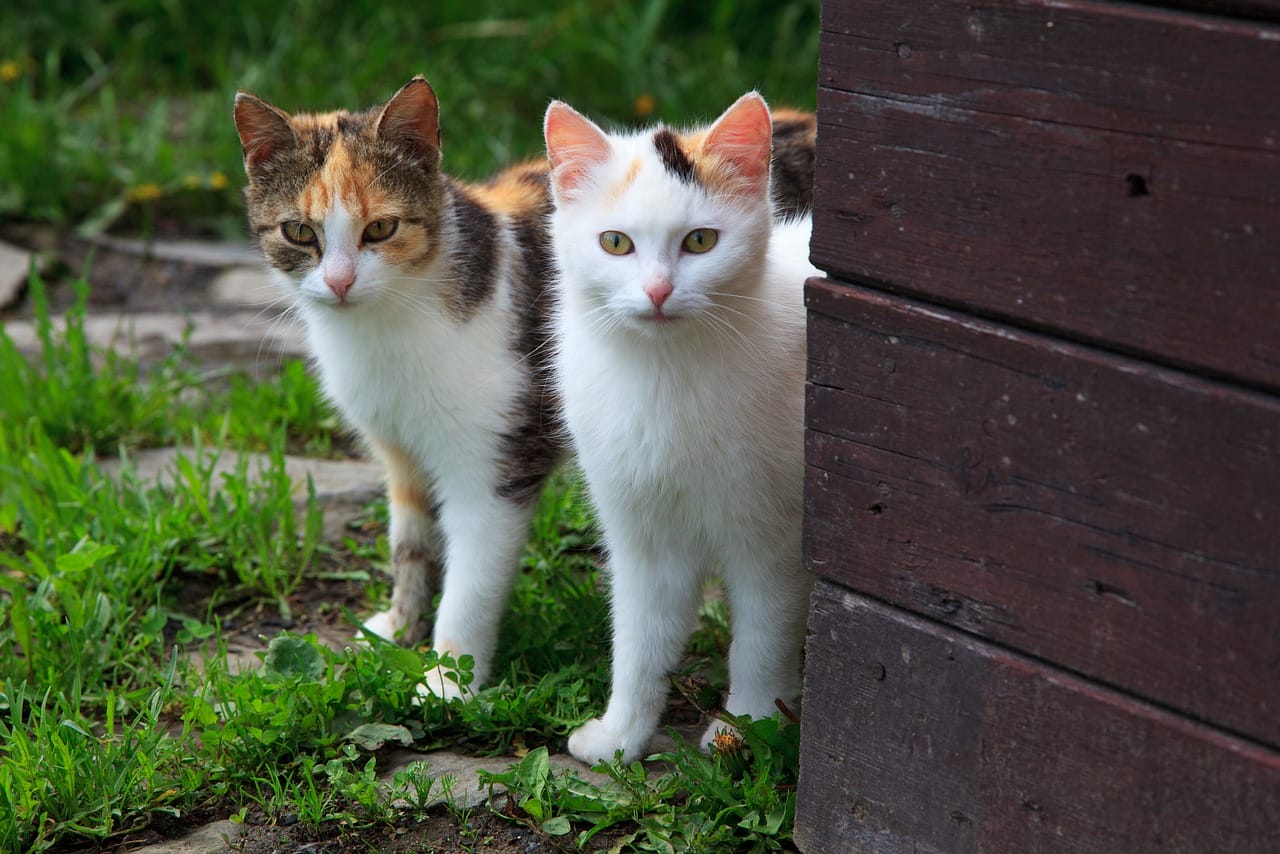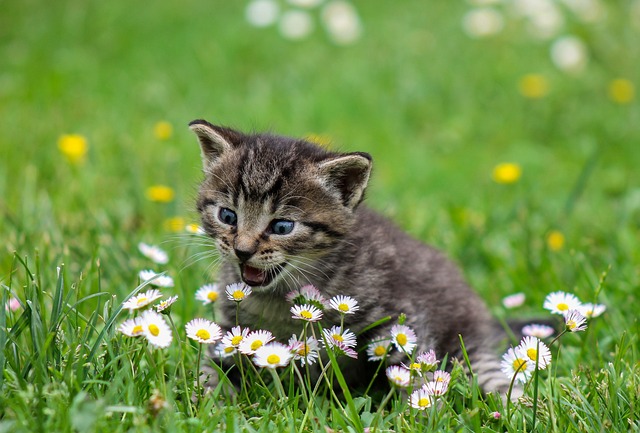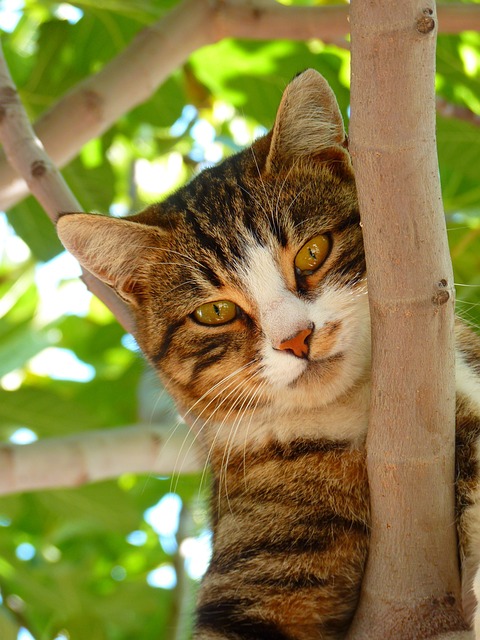Understanding the feline heat cycle is crucial for cat owners to manage their pet’s reproductive health effectively. This comprehensive guide aims to demystify the complexities of the feline heat cycle, shedding light on its stages, signs, management strategies, and health considerations.
What is the Feline Heat Cycle?
The feline heat cycle, also known as estrus, is a natural reproductive cycle that female cats undergo to prepare for mating and reproduction. It is characterized by hormonal changes that influence a cat’s behavior, physiology, and fertility.
At What Age Do Cats Go into Heat?
Cats typically reach sexual maturity and begin going into heat, also known as estrus, between the ages of 5 to 9 months. However, the exact age at which a cat first goes into heat can vary depending on factors such as breed, genetics, and environmental conditions. Some cats may experience their first heat cycle as early as 4 months old, while others may not enter estrus until they are a year old or older.

Stages of the Feline Heat Cycle
During the heat cycle, female cats go through several distinct phases:
- Proestrus Phase: The proestrus phase marks the beginning of the cat heat cycle and typically lasts for 1 to 2 days. During this phase, female cats exhibit subtle behavioral changes as their bodies prepare for ovulation. While not yet receptive to mating, cats in proestrus may display signs such as increased vocalization, restlessness, and affectionate behavior towards their owners. Additionally, they may exhibit physical changes such as a swollen vulva and an increase in urine marking behavior.
- Estrus Phase: Estrus, or “heat,” is the fertile phase of the cat heat cycle and is characterized by the cat’s readiness to mate. This phase typically lasts for 5 to 7 days but can vary among individual cats. During estrus, female cats become sexually receptive and actively seek out male companionship. They may exhibit more pronounced signs of heat, including rubbing against objects, assuming a mating position with their hind end raised, and vocalizing to attract male cats. Additionally, cats in estrus may display increased grooming behavior and may become more affectionate towards their owners.
- Metestrus/Diestrus Phase: Following estrus, the metestrus/diestrus phase represents the period of sexual inactivity between heat cycles. This phase typically lasts for 1 to 2 weeks and marks the transition from fertility back to sexual quiescence. While some signs of heat may persist during metestrus/diestrus, such as residual affectionate behavior and increased grooming, female cats are no longer receptive to mating during this phase. Instead, they may exhibit behaviors indicative of relaxation and contentment as their bodies return to a non-reproductive state.
- Anestrus Phase: Anestrus is the inactive phase of the cat heat cycle, during which female cats are not in heat. This phase typically lasts for several weeks to months and represents a period of reproductive dormancy. Female cats do not exhibit signs of heat during anestrus, and their reproductive organs are quiescent. Anestrus allows the cat’s body to rest and recuperate between heat cycles, ensuring optimal reproductive health and fertility over time.
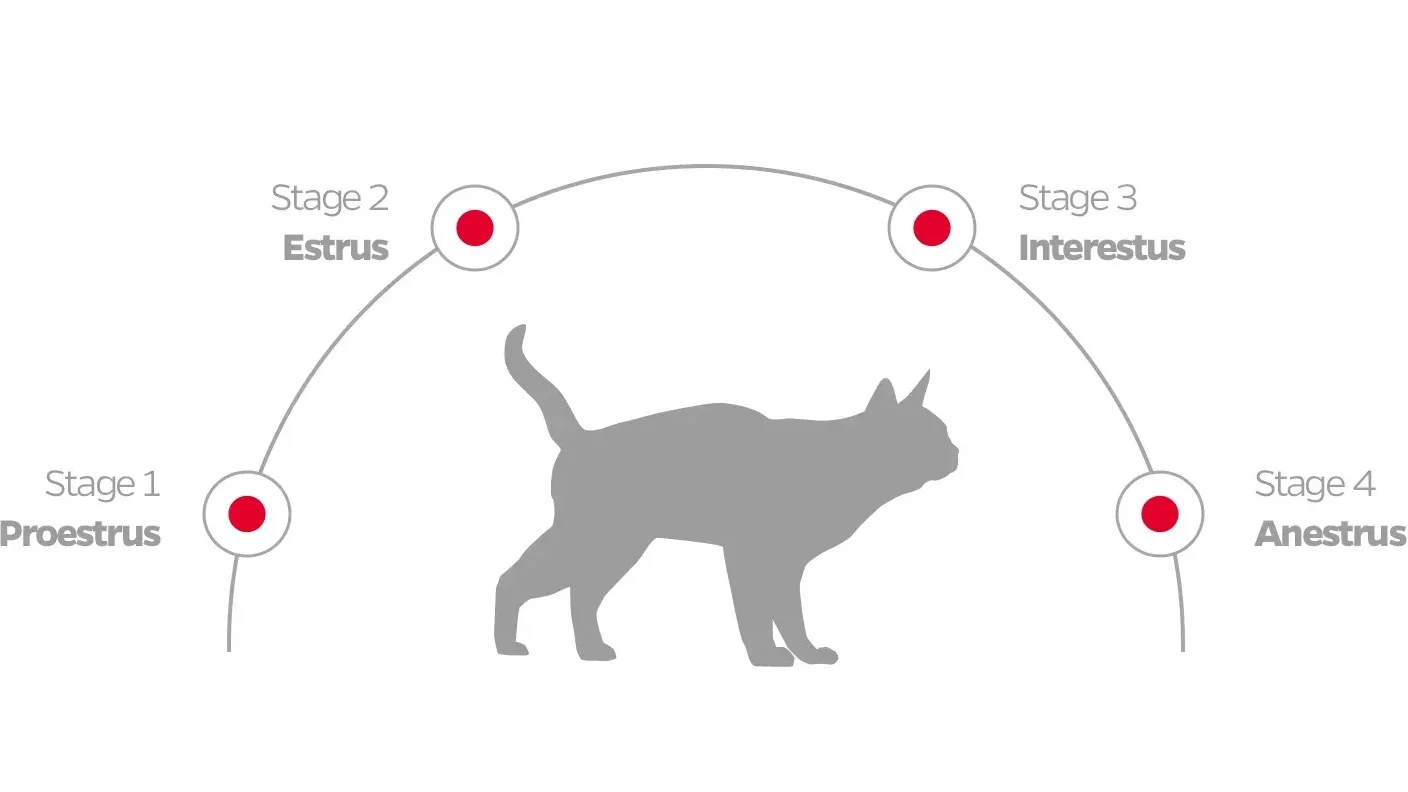
Duration and Frequency of the Heat Cycle
The duration of the heat cycle, also known as estrus, in female cats can vary depending on individual factors such as breed, age, and environmental conditions. Generally, the heat cycle consists of several stages and typically lasts around 7 to 10 days, although it can range from as short as 3 days to as long as 21 days in some cases.
The frequency of the heat cycle can vary among individual cats and is influenced by factors such as breed, season, and environmental conditions. In most cases, female cats experience heat cycles every 2 to 3 weeks during the breeding season, which typically occurs from early spring to late fall. However, some cats may have irregular heat cycles or may not cycle at all outside of the breeding season.
Signs That a Cat’s in Heat
There are various signs and symptoms that indicate when a female cat is in heat:
- Vocalization: One of the most prominent signs of the cat heat cycle is increased vocalization. Female cats in heat often become more vocal than usual, emitting loud and persistent meows, yowls, and other vocalizations. These vocalizations serve as a means of attracting male cats and signaling their readiness to mate. The intensity and frequency of vocalization may vary among individual cats, but it is a common and unmistakable indication that a cat is in heat.
- Behavior Changes: During the cat heat cycle, female cats may exhibit a range of behavior changes that reflect their heightened reproductive state. These behaviors can include restlessness, pacing, and agitation, as well as increased affectionate behavior towards their owners. Cats in heat may rub against objects or people more frequently, display kneading behavior with their paws, and seek out attention and physical contact. Additionally, female cats in heat may assume a mating position with their hind end raised and their tail held to the side.
- Urine Marking: Another common sign of the cat heat cycle is urine marking behavior. Female cats in heat may engage in urine spraying, which involves releasing small amounts of urine in strategic locations to attract male cats. Urine marking serves as a form of communication and territorial signaling, allowing female cats to advertise their reproductive status and attract potential mates. Cat owners may notice urine marking on vertical surfaces such as walls, furniture, and doorframes, particularly in areas frequented by other cats.
- Increased Affection: Female cats in heat may exhibit increased affection towards their owners during the heat cycle. They may seek out more physical contact, such as cuddling, rubbing against their owner’s legs, and sitting in their lap. While cats are typically independent animals, those in heat may become more clingy and demanding of attention. Providing reassurance and affection to a cat in heat can help alleviate their stress and discomfort during this reproductive phase.
- Agitation and Restlessness: Female cats in heat may also display signs of agitation and restlessness. They may pace around the house, vocalize loudly, and exhibit signs of frustration or anxiety. Cats in heat may appear more restless than usual, unable to settle down or relax due to their heightened reproductive drive. Providing environmental enrichment, such as interactive toys and climbing structures, can help alleviate boredom and provide mental stimulation for cats in heat.
- Appetite Changes: Some female cats may experience changes in appetite during the heat cycle. While some cats may eat less than usual due to stress or agitation, others may exhibit an increase in appetite. These appetite changes can vary among individual cats and may be influenced by factors such as age, health status, and environmental conditions. Cat owners should monitor their cat’s eating habits and ensure they have access to fresh water and nutritious food throughout the heat cycle.
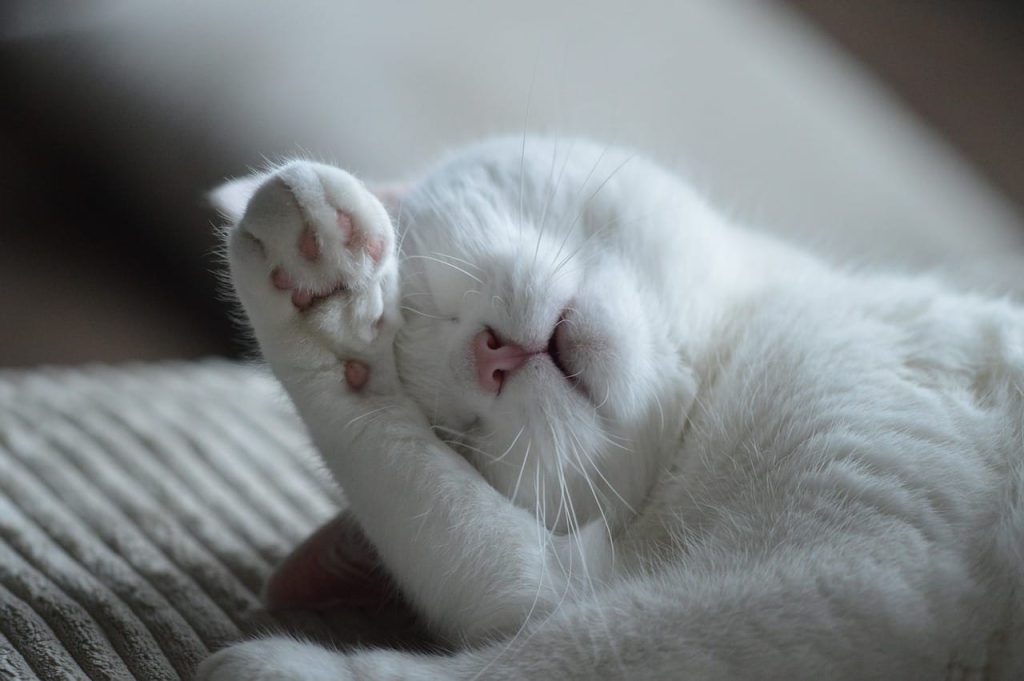
Managing the Feline Heat Cycle
When your cat is in heat, it’s important to provide appropriate care and support to help alleviate their discomfort and manage their behavior. Here are some steps you can take when your cat is in heat:
- Provide Comfort and Reassurance: Cats in heat may experience stress and agitation due to their heightened reproductive drive. Providing a calm and comfortable environment can help alleviate their anxiety. Create a quiet space where your cat can retreat and relax, away from loud noises and other pets.
- Offer Plenty of Attention: Female cats in heat may seek out more attention and physical contact than usual. Spend extra time with your cat, offering reassurance and affection to help ease their stress. Engage in interactive play sessions and provide opportunities for bonding to help distract your cat from their discomfort.
- Keep Your Cat Indoors: To prevent unwanted pregnancies and potential mating-related injuries, it’s important to keep your cat indoors while she is in heat. Female cats in heat may try to escape outdoors in search of a mate, so be sure to secure windows and doors to prevent accidental escapes.
- Consider Spaying: Spaying (ovariohysterectomy) is a highly effective method of preventing heat cycles and unwanted pregnancies in female cats. If you do not plan to breed your cat, consider having her spayed to prevent the recurrence of heat cycles and associated behavioral changes. Spaying also offers long-term health benefits, such as reducing the risk of certain reproductive cancers and uterine infections.
- Provide Environmental Enrichment: Cats in heat may benefit from environmental enrichment to help alleviate boredom and provide mental stimulation. Offer interactive toys, puzzle feeders, and climbing structures to keep your cat entertained and engaged. Providing opportunities for play and exploration can help redirect your cat’s energy and focus.
- Consult with Your Veterinarian: If you have concerns about your cat’s behavior or health while she is in heat, consult with your veterinarian for guidance. Your veterinarian can offer advice on managing your cat’s heat cycle and may recommend strategies for alleviating discomfort, such as using pheromone diffusers or prescription medications.
- Monitor for Signs of Heat Exhaustion: Female cats in heat may be at risk of heat exhaustion, especially if they become overly agitated or stressed. Monitor your cat closely for signs of heat exhaustion, such as excessive panting, lethargy, and drooling. If you suspect your cat is experiencing heat exhaustion, seek veterinary care immediately.
Health Considerations
Unplanned pregnancies can pose risks to the health of both the mother cat and her kittens. Additionally, repeated heat cycles in unspayed cats may increase the risk of certain reproductive disorders, such as pyometra (uterine infection) and mammary tumors. Regular veterinary care and spaying or neutering are essential for maintaining the long-term health of female cats.
Conclusion
The feline heat cycle is a natural part of a cat’s reproductive cycle, but it requires careful management and consideration from cat owners. By understanding the stages, signs, and health implications of the heat cycle, cat owners can make informed decisions to ensure the well-being of their feline companions.

